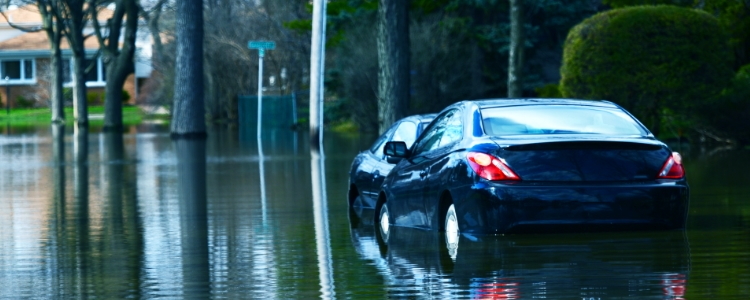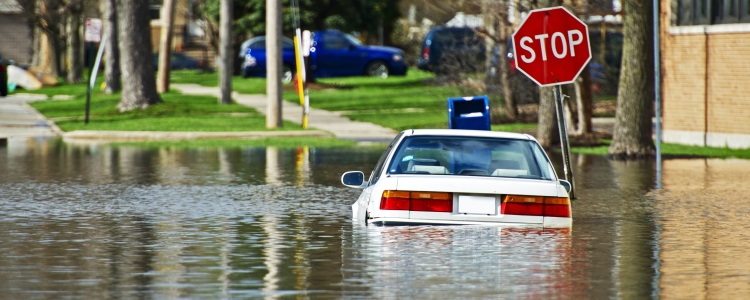According to Kelley Blue Book chief economist Jonathan Smoke, 20,000 to 40,000 vehicles are expected to be declared a total loss due to Hurricane Florence. We expect to see many of these cars return to the market soon. Flooded vehicles can be fixed and sold, and not all states require a salvage title, which means car buyers could be purchasing a flood-damaged vehicle without realizing it.
Common Problems with Flooded Cars
Once a vehicle floods, extensive damage can be done to both the interior and exterior. Depending on the severity of the flooding, the car may be declared a total loss. If you’re in the market for a used vehicle, and wonder if it experienced any flood damage, there are seven signs you can look out for, as suggested by Money Max:
 Malfunctioning electronics and electrical system – Systems such as the air conditioning, electrical control unit (ECU), headlights, power windows and locks, and infotainment systems should all work with no problem. If the car has flood damage, one or more of these electrical systems could malfunction.
Malfunctioning electronics and electrical system – Systems such as the air conditioning, electrical control unit (ECU), headlights, power windows and locks, and infotainment systems should all work with no problem. If the car has flood damage, one or more of these electrical systems could malfunction.- Mechanical damage to the engine – Water can enter the engine through the air intake and break the connecting rods if you try and start it. One simple trick to see if water has entered the engine is to check the oil dipstick – if the oil is milky or the stick shows water droplets, water has likely made its way inside.
- Mold and mildew – Submerged interiors can quickly be overtaken by mold and mildew. Aside from the seats and carpeting, mold can build up in the door panels, trunk, A/C system, and headliner. Look for any odd spots or smells all over the interior.
- Mud and debris – Much like mold buildup, you may be able to detect mud or debris in hard to reach areas that didn’t get cleaned up. Double check the engine compartment, wheels, brakes, and any small gaps under the hood and in and around the trunk.
- Rusting parts – If the vehicle has some rust, it can be a sign that it was in a flood. While rust takes months or even years to build up, if the seller claims the car was never affected by flooding but rust says otherwise, it may be best to walk away.
- Brake performance – When test driving, see how well the brakes perform. Flooding can cause the brakes to lose grip and slide. If the brakes weren’t properly replaced after being immersed in water, you’ll be able to feel it. A good tip is to pump the brakes before you even hit the road.
- Contaminated fluids – Make sure all fluids are clear. Check the transmission, power steering, oil, and coolant reservoirs. There shouldn’t be any water present.
Avoiding Flood-Damaged Cars
You can easily avoid buying a flood-damaged vehicle. The trick is to know the signs of flood damage. Test drive the car, have it thoroughly inspected by a mechanic, and look up the vehicle history report using the VIN number. It’s always better to be safe than sorry, and if you suspect a car was damaged by flooding, walk away from the sale.
If you’re in the market for a used car, but worry you’ll finance one that isn’t reliable because of bad credit, don’t fret. At Auto Credit Express, we help buyers get connected to a local dealership that specializes in helping people with credit issues purchase vehicles. Get the process started by filling out our free and easy car loan request form today!
















